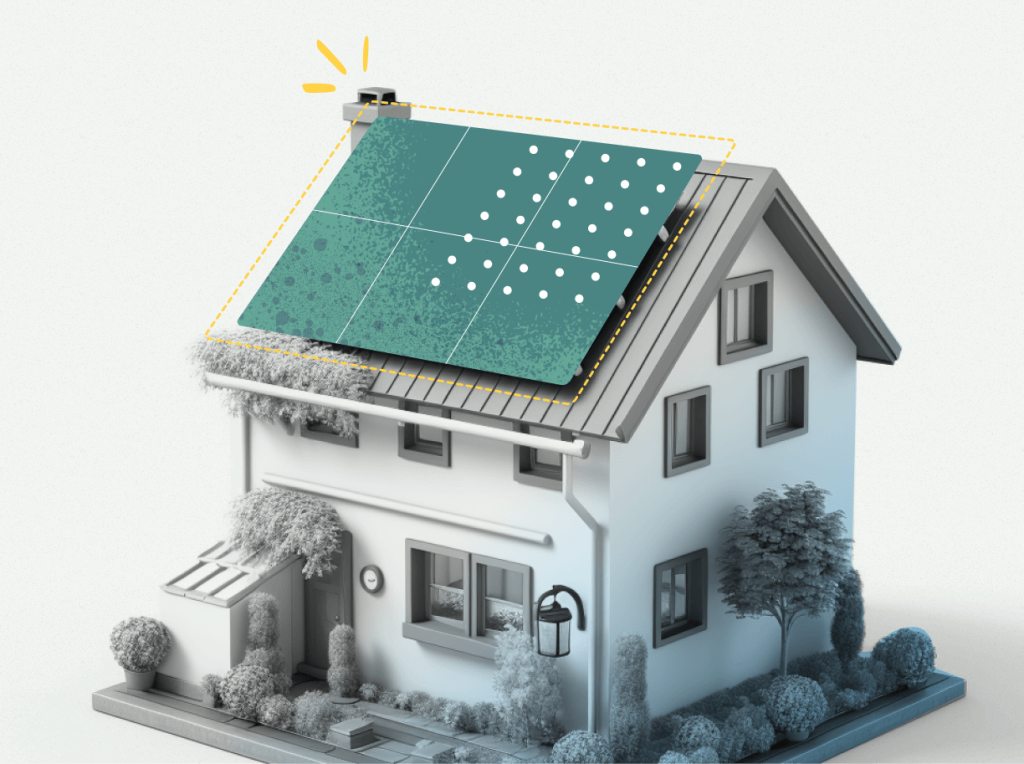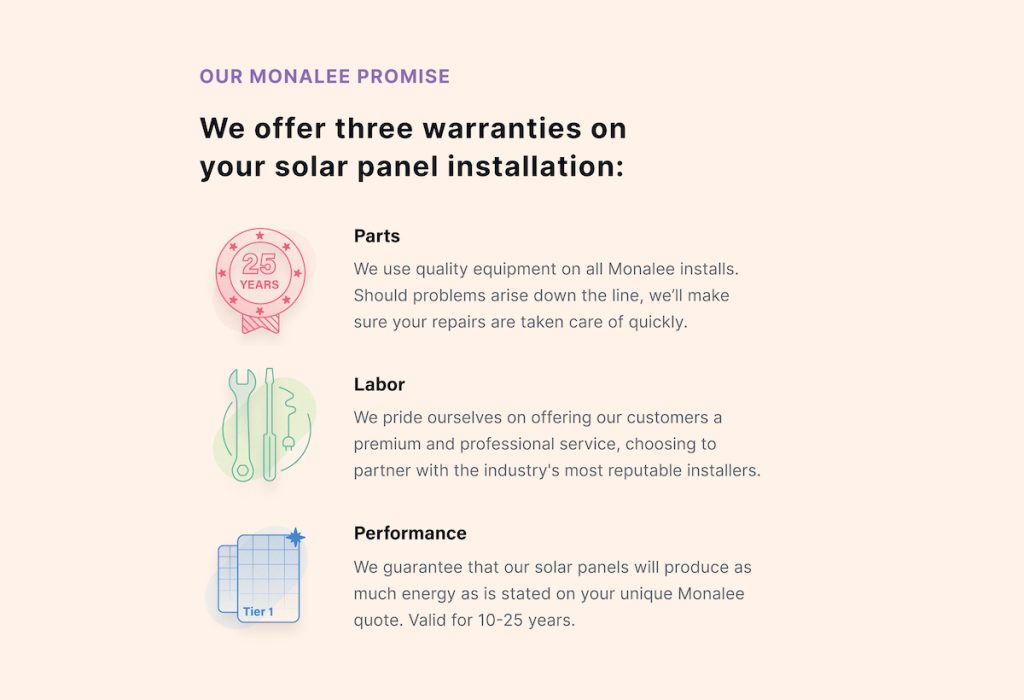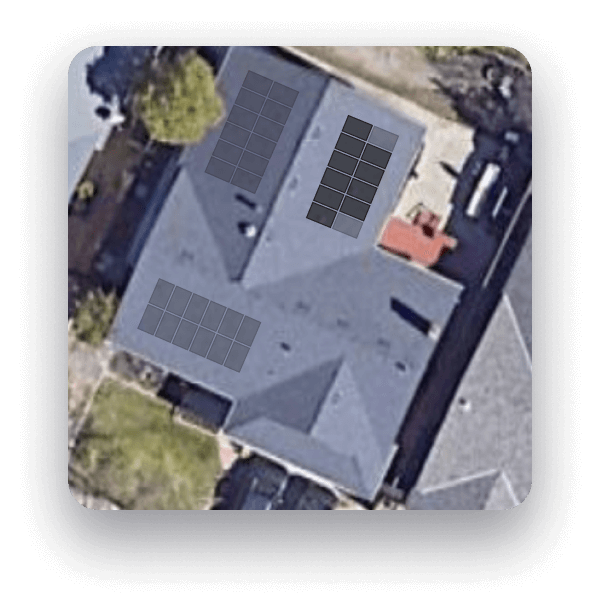If you’ve ever seen a solar panel close up, the size and weight might surprise you. This type of solar equipment is built for long-term use, and similar to suitcase testing, panels go through rigorous rounds of testing to make sure that they’re as durable as designed.
During these tests, they’re met with all types of weather conditions–rain, hail, sleet, snow, you name it–as well as other obstacles they could come in contact with such as baseballs and fallen tree branches.
All this is to say that solar panels, while a significant investment at first, pay for themselves in the long run.
Read below for more insight on how long solar panels last, and what measures you can take to ensure their efficiency through the years.

What are solar panels made of?
There are actually two types of solar technology that can generate electricity from the sun. The more common ones are photovoltaic (PV) panels or modules and this technology uses the sun’s light to make electricity. The other technology is concentrating solar power (CSP), which generates electricity from the sun’s heat.
As described by the Institute for Sustainable Futures, the typical crystalline silicon solar panel is made of about 76% glass, 10% plastic polymer, 8% aluminum, 5% silicon, 1% copper, and less than 0.1% silver and other metals. There’s a whole lot more that goes into building solar panels, including turning silicon dioxide into pure “metallurgical grade silicon” (MGS). Even more interesting, silicon actually comes from sand.
The good news is that solar panels are not only strong and built to last, but they emit 25 times less carbon dioxide compared to coal-powered electricity.

What is their rate of degradation?
According to a study from National Renewable Energy Laboratory (NREL), the average degradation rate is 0.50% across all solar panels. That means you could still expect your solar output to be about 89% of its original output after 25 years (source: Forbes).
While this is the average, the rate of degradation is largely dependent on how well-made the panels are themselves. Solar panels fall into three tiers: Tier One, Tier Two, and Tier Three. Tier One is the highest level of solar panels and naturally, has the highest longevity.
Compared to Tier Two and Tier Three solar panels, Tier One panels will have higher standards across the board and should last 25 years or more. Tier One solar panels have a rate of 0.30% degradation year over year, while Tier Two has 0.50% and Tier Three has 0.80-percent.
One thing to note is that Tier One solar panels are more expensive, however their durability and longevity mean that they ultimately pay for themselves.
At Monalee, we use LONGi 400w solar panels. LONGi panels feature advanced cell technology, high performing modules, and are able to withstand high snow and wind conditions. Monalee homeowners also benefit from LONGi’s 25-year warranty for materials and processing and a 30-year warranty for extra linear power output.

What factors affect their longevity?
Three main factors affect how long your home’s solar panels will operate at their capacity, and if/when replacing them is necessary.
Quality of parts
As covered, Tier One solar panels are going to have higher standards overall, and this includes the materials they are made from. In the case of LONGi 400w solar panels, they are made of premium materials and designed to last upwards of 25 years.
Weather and climate
Weather and climate affect the durability of solar panels but not as much as you think. LONGi panels feature advanced cell technology, high performing modules, and are able to withstand high snow and wind conditions.
Solar panels can even withstand hail and other, harsh weather conditions. Tier One solar panels, for example, have an added layer of protection in the form of a thick layer of tempered glass. This means that they’re able to handle a good amount of impact without getting damaged.
Maintenance over time
Of course, there are limits to everything, and it’s always a good idea to have your solar panels maintained whenever you can. Seasonality plays a role. For example, if there are nearby trees, leaves can fall on your solar panels and therefore cause a barrier between them and the sun. This affects how productive the panels are and how much energy is produced.

How can you care for your solar panels?
Solar panels are built to be durable and withstand many different environmental factors such as rain, wind, and varying degrees of outdoor temperatures. That said, we have a few tips for keeping them in tip top shape.
Clean up and maintenance
Whether or not it’s worth the trouble that comes along with cleaning your solar panels is often a hot debate among homeowners. As we cover in our solar panel maintenance guide, normal pollutants such as dust, leaves, and animal droppings do not negatively impact the efficiency of solar panels. In fact, the sun, rain, and wind are pretty effective at getting rid of those pollutants naturally.
One factor to consider is whether or not your solar panels are installed at an angle. This, of course, depends largely on whether your roof is flat or tilted. Solar panels installed at an angle are better suited to be cleaned by natural rainfall whereas flat-lying panels are prone to more debris buildup. When solar panels lie flat, rain will hit them directly and because there’s no angle to act as a natural irrigation system, water and other pollutants remain on the panels and dry like that.
If you’re worried about grime building up, consider hiring professional cleaners every six months or so. Yes, it’s an added expense but you don’t want to risk your safety by trying to do it yourself. Working on a roof is tricky enough; you don’t need to put your safety at risk.
Upgrades to consider
In an effort to clean and maintain your solar modules, consider investing in one of more add-ons such as a solar skirt or a critter guard.
As you might guess, critter guards are put in place to deter rodents and prevent debris like fallen leaves from interfering with your system’s energy production. These barriers are installed between the solar panels and your roof and usually made of mesh barriers.
Solar skirts are another option, although they’re intended more as an aesthetic improvement. They help hide wires and railings while reducing access under your panels for pests such as pigeons and squirrels.
Workmanship of installation
A third factor to consider is how well your solar equipment was installed in the first place. At Monalee, our installation crews are highly experienced working with all types of roof materials, and take all the necessary safety precautions. In fact, one of our customers specifically chose us because our team was the only company who had workers skilled enough to work with his metal roof.
It’s important to be mindful of any potential threats around your roof, such as low tree branches that might end up falling on your solar panels. You’ll also want to make sure the racking system is installed properly because if not, it can add to the panels’ degradation.

Monalee’s equipment guarantee
Monalee projects come with warranties on solar equipment, installation, and performance. We know that choosing to go solar is a big decision and can be a big investment, so we want to make the transition as seamless as possible. This is why we make sure to partner with the best equipment on the market so that your solar system produces the most energy possible.



























